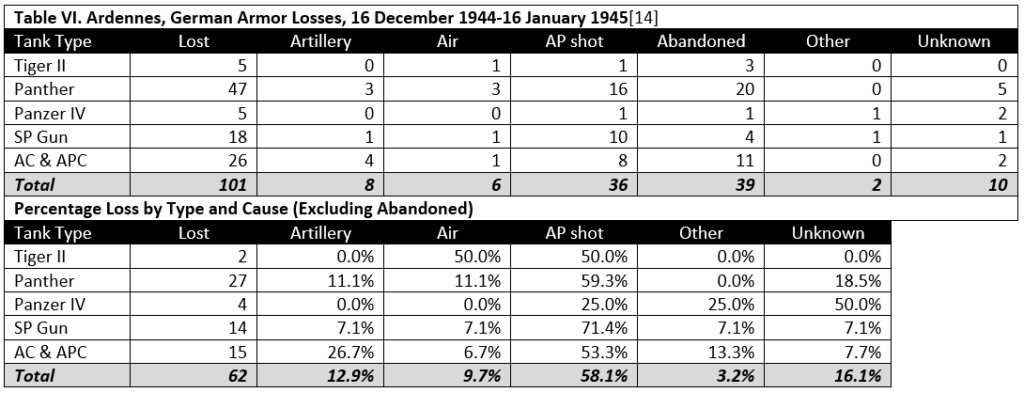
[This series of posts is adapted from the article “Artillery Effectiveness vs. Armor,” by Richard C. Anderson, Jr., originally published in the June 1997 edition of the International TNDM Newsletter.]
Posts in the series
Artillery Effectiveness vs. Armor (Part 1)
Artillery Effectiveness vs. Armor (Part 2-Kursk)
Artillery Effectiveness vs. Armor (Part 3-Normandy)
Artillery Effectiveness vs. Armor (Part 4-Ardennes)
Artillery Effectiveness vs. Armor (Part 5-Summary)
[14] From ORS Joint Report No. 1. A total of an estimated 300 German armor vehicles were found following the battle.
[15] Data from 38th Infantry After Action Report (including “Sketch showing enemy vehicles destroyed by 38th Inf Regt. and attached units 17-20 Dec. 1944″), from 12th SS PzD strength report dated 8 December 1944, and from strengths indicated on the OKW briefing maps for 17 December (1st [circa 0600 hours], 2d [circa 1200 hours], and 3d [circa 1800 hours] situation), 18 December (1st and 2d situation), 19 December (2d situation), 20 December (3d situation), and 21 December (2d and 3d situation).
[16] Losses include confirmed and probable losses.
[17] Data from Combat Interview “26th Infantry Regiment at Dom Bütgenbach” and from 12th SS PzD, ibid.




About Krinkelt-Rocherath.Wwhatever these “losses” might mean the reality was (more likely) that written offs were far far lower. Did 12th SS Panzer Division write off more than ~ 25 AFV at all? 18 AFV were surely abandoned (according Steven Zaloga) and there might have been some more. But it’s a long way to that claim of 139 tanks by American forces.